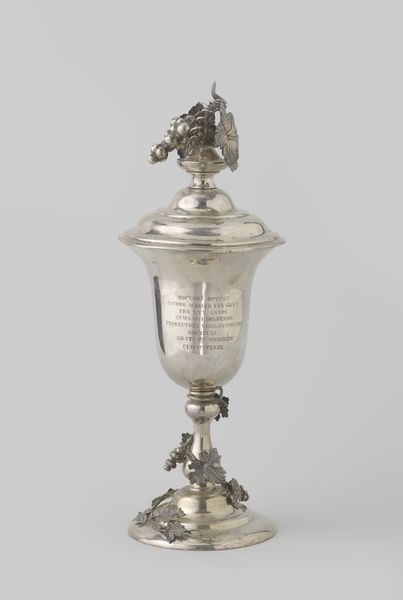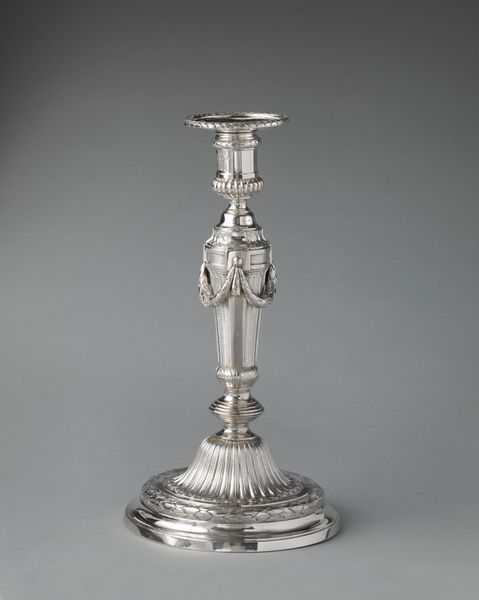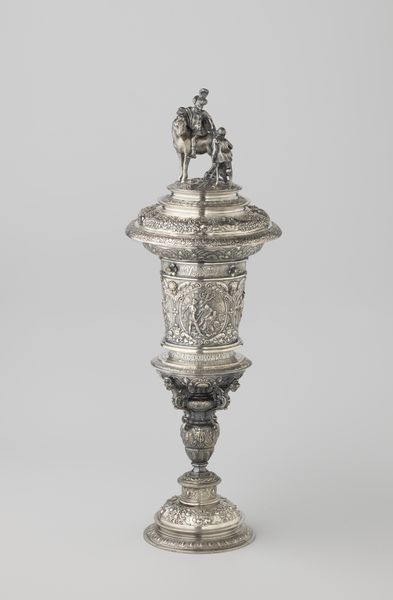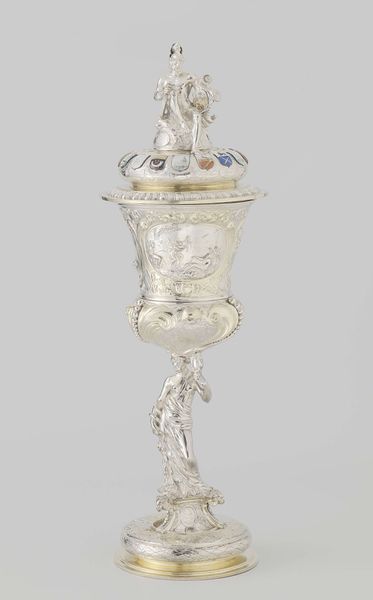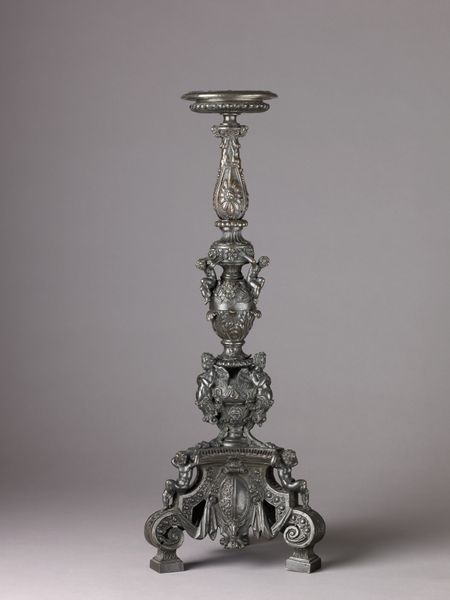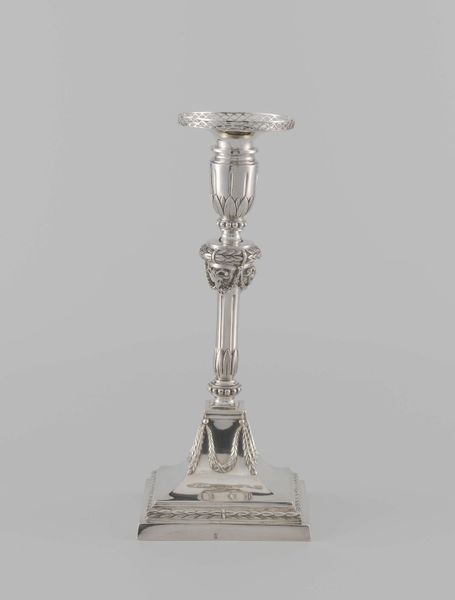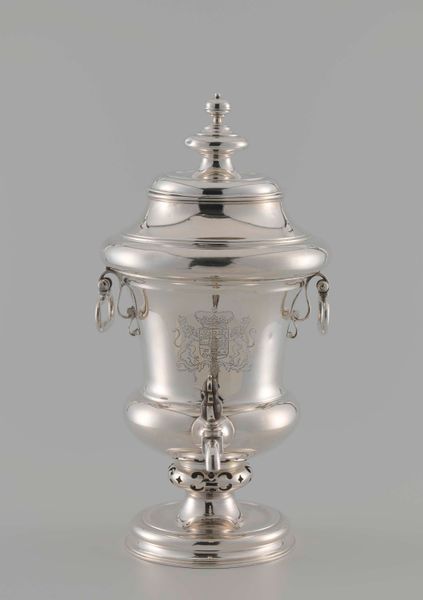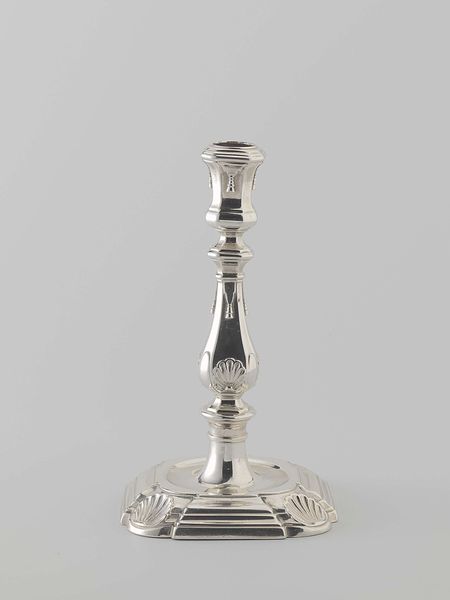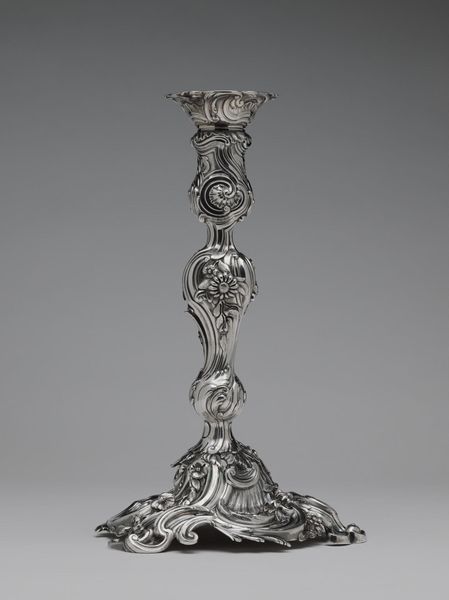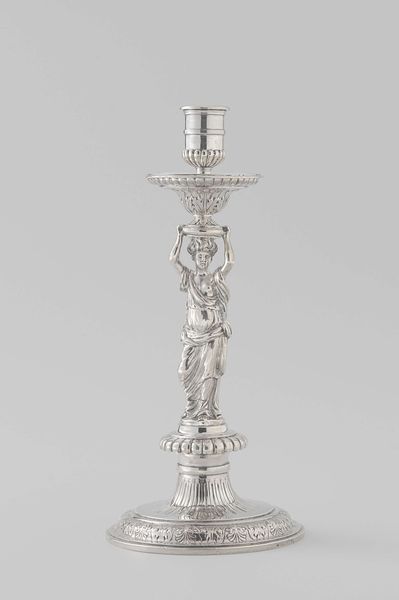
Dimensions: height 36.7 cm, diameter 9.6 cm, diameter 8.8 cm
Copyright: Rijks Museum: Open Domain
Editor: This piece is a Lidded Goblet and Table Bell crafted in 1851 by Johannes Mattheus van Kempen. It’s made of silver, and it feels very… regal. The craftsmanship is astonishing. What can you tell me about its significance? Curator: This object speaks volumes about the social aspirations of the burgeoning Dutch middle class in the mid-19th century. Notice the level of detail, the ornamentation; these elements reflect a desire to emulate aristocratic taste and display wealth. Editor: I see the echoes of Baroque, especially in the figuration and elaborate details, but I was under the impression Baroque was a style from much earlier than the 19th century? Curator: You’re right. Its resurgence as a historical revival style coincided with increased industrialization. Objects like this lidded goblet allowed the upwardly mobile to showcase their access to traditionally exclusive symbols of power and prestige, demonstrating both their financial capacity and their ‘cultural literacy’. What kind of narratives do you imagine being enacted around it? Editor: A show of status and wealth. Like this bell that they ring and a fancy wine that they drink. It gives an image of someone trying hard to emulate the aristocracy of old. Almost ostentatious... Curator: Precisely. The goblet and bell aren’t merely functional; they’re performative. They signal a shifting social landscape and the democratisation of luxury, but also potential tensions surrounding newly acquired wealth and its display. Editor: It's fascinating to see how an object can tell such a detailed story about its time. Thanks, I’ll look at decorative arts in museums very differently now. Curator: Indeed, studying an artwork in terms of social forces really shows us its role in its moment, and in the long history of class, aspiration, and artistry.
Comments
rijksmuseum about 2 years ago
⋮
When producing work for the World Fairs, Van Kempen called on leading designers capable of creating consistent designs in historical styles. An example is the goblet from 1851, modelled on the Renaissance. The style of the company’s customary products, such as the table bell, for which Van Kempen combined various sources of inspiration, was much less pronounced. Its angular shapes reference the Baroque, the engraved asymmetrical decoration the Rococo.
Join the conversation
Join millions of artists and users on Artera today and experience the ultimate creative platform.
